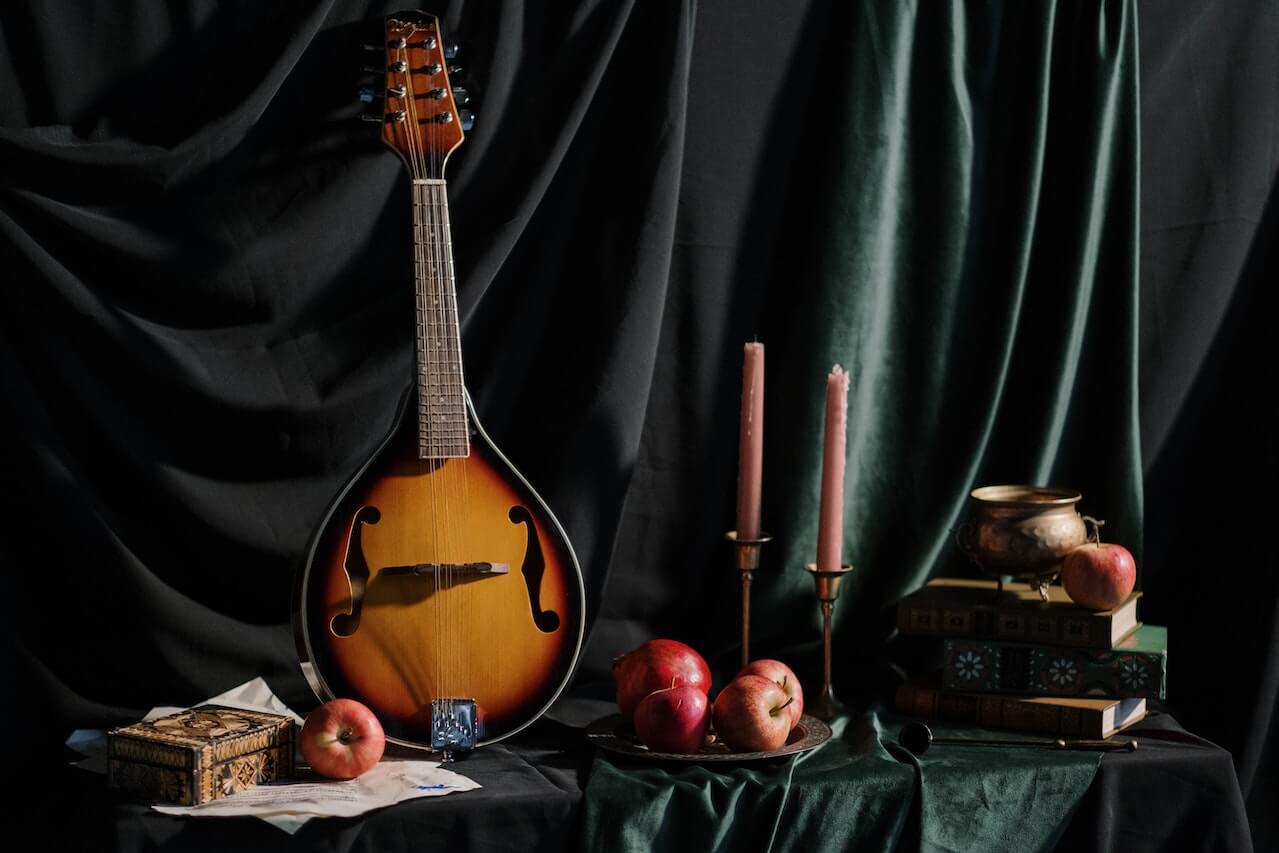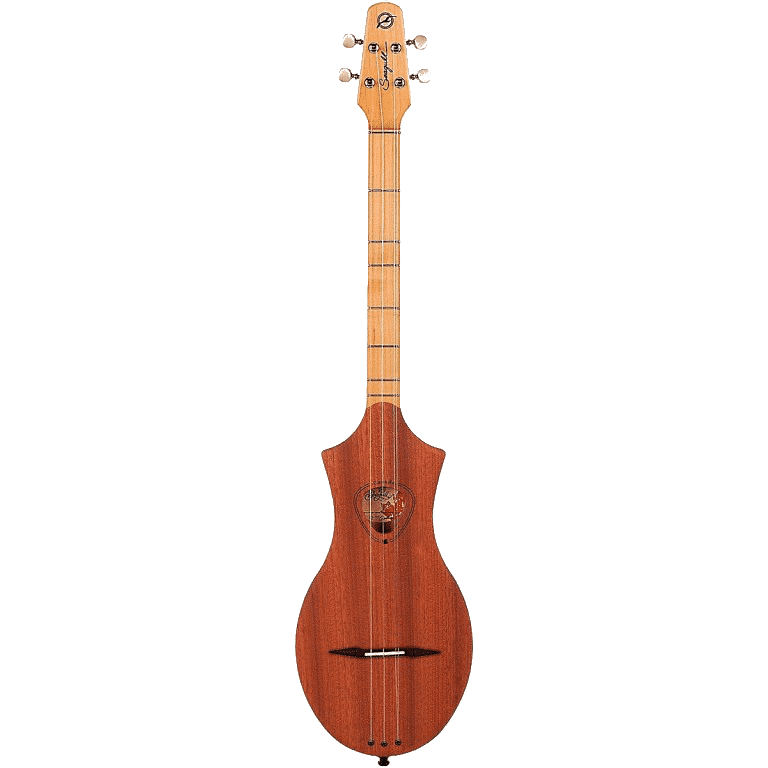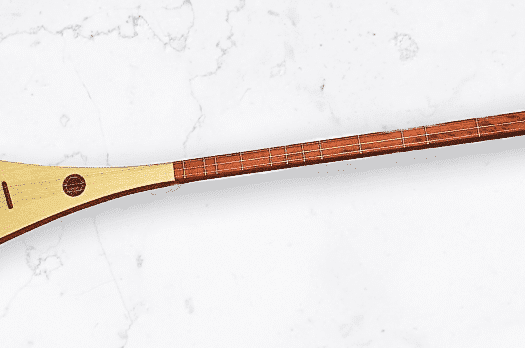The dulcimer and the mandolin are both stringed musical instruments that have distinct characteristics and origins. While they share some similarities, they have significant differences in construction, playing technique, and musical styles. Below we explore some differences and similarities of the dulcimer vs mandolin.
Dulcimer vs Mandolin – An Introduction
When we talk about dulcimers, two styles generally come to mind. The first style is the Appalachian or “mountain” dulcimer which is often played on the lap. This is traditionally a narrowly-shaped, fretted acoustic instrument with strings that are strummed to produce sound – either with fingers or with a pick (or “plectrum”). Sometimes a noter is used to hold down the melody strings while playing.
The second style is the hammered dulcimer, which is a multi-stringed acoustic instrument whose strings are struck with small hammers. The hammered dulcimer is typically trapezoidal in shape and played on a solid surface or table. Both styles produce the “sweet” dulcet sounds that are characteristic of dulcimers.
While there are other less played varieties of dulcimer instruments, including the dulcimer guitar, the stick dulcimer, the banjo dulcimer, and the resonator dulcimers, the most popular styles today are the mountain and hammered dulcimers.
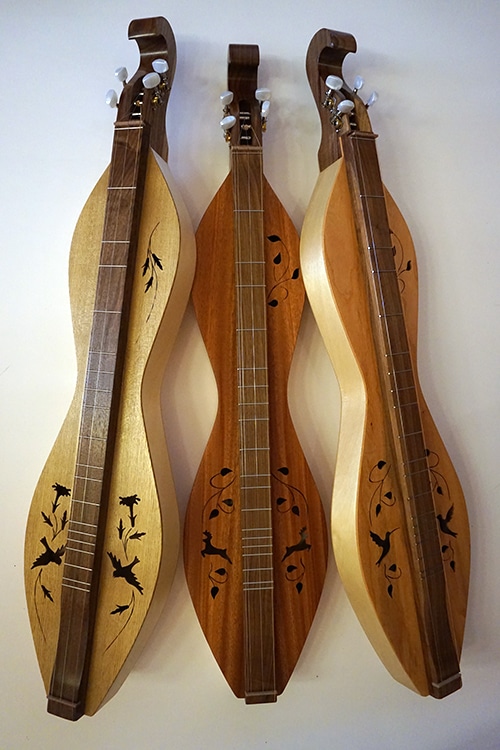
Source: cedarcreekdulcimers.com
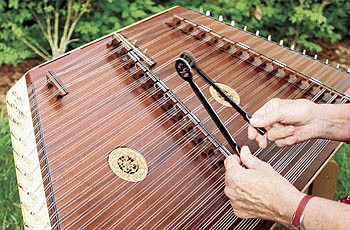
Origins and History
When comparing the dulcimer vs mandolin, let’s first start off with their histories.
The dulcimer has a rich history that can be traced back to ancient civilizations, particularly in the Middle East and Persia. It has different variations and names across various cultures, such as the hammered dulcimer, mountain dulcimer, and santoor. The dulcimer has been used in traditional folk music and has evolved and adapted to different musical styles and regions.
The mandolin, on the other hand, has its roots in Europe, particularly Italy. It is a member of the lute family and is believed to have evolved from the lute during the 17th and 18th centuries. The mandolin gained popularity in classical music and found its way into various genres, including folk, bluegrass, and country.
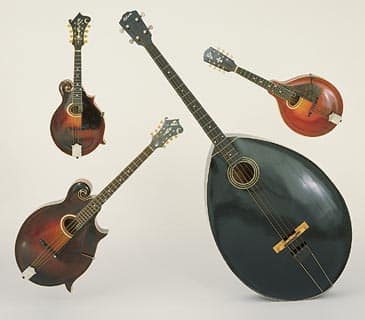
Construction
When in comes to the dulcimer vs mandolin, there are some notable differences in terms of construction.
The dulcimer typically consists of a trapezoidal or hourglass-shaped soundboard made of wood. It features multiple strings that are usually arranged in courses or pairs. In the hammered dulcimer, the strings are struck with small hammers or mallets, while in other variations, such as the mountain dulcimer, the strings are plucked or strummed with the fingers or a pick.
The mandolin has a body similar to a small guitar, with a rounded back and a soundboard. It has a fretted neck and typically features four pairs of metal strings. The strings are plucked or strummed with a pick or plectrum. The mandolin’s construction allows for precise and rapid picking techniques.
Playing Technique
In terms of playing technique, there are district differences when comparing the dulcimer vs mandolin.
Playing the dulcimer involves striking or plucking the strings to produce sound. In the hammered dulcimer, the player uses small hammers or mallets to strike the strings, creating a percussive and melodic effect. In other dulcimer variations, such as the mountain dulcimer, the strings are plucked or strummed with the fingers or a pick. The dulcimer allows for both melodic playing and chordal accompaniment.
The mandolin is primarily played by plucking or picking the strings with a pick or plectrum. It allows for various playing techniques, including tremolo, chords, and intricate melodic lines. The mandolin’s construction, coupled with its double-string courses, enables fast and intricate picking patterns.
Dulcimer guitars are similar in some respects to the mandolin, as both resemble the acoustic guitar. Dulcimer guitars (or “dulcitars”) produce softer tones, while mandolins product brighter tones.
One dulcitar worth mentioning is the Seagull Merlin Mahogany SG Dulcimer Guitar. This particular instrument receives great reviews for its timeless design, construction, and exceptional sound qualities.
Musical Style and Repertoire
When comparing the dulcimer vs mandolin, there are also distinct differences in musical style and repertoire.
The dulcimer is commonly associated with folk and traditional music, particularly in the Appalachian region of the United States. It has a distinctive sound that lends itself well to playing traditional tunes and creating a melodic and rhythmic foundation. The dulcimer has also been adapted to contemporary genres, including folk-rock and world music.
The mandolin has a diverse range of musical styles and repertoire associated with it. It is often found in classical music compositions, particularly in the form of mandolin orchestras. However, the mandolin is most closely associated with genres like bluegrass, country, and folk. Its bright and lively tone lends itself well to virtuosic solo playing, as well as rhythmic and melodic accompaniment.
Below are sample songs played on the mandolin that span multiple musical styles. Please support the creator of this video, Acoustic Groove Box, by subscribing and liking the videos.
Dulcimer vs Mandolin Comparison – Final Words
While both the dulcimer and the mandolin are stringed acoustic instruments, they differ in terms of origin, construction, playing technique, and musical repertoire. The dulcimer is known for its variations and adaptability in folk and traditional music, while the mandolin has a broader history and is associated with genres like bluegrass, country, and classical music.
In terms of playability, the dulcimer guitar (or “dulcitar”) is most like the mandolin. However, the mandolin typically produces much brighter tones than the dulcitar which, like the mountain dulcimer, is known for its sweet (or “dulcet”) tones.
Hopefully this quick comparison of the dulcimer vs mandolin was useful. Drop us a line if there are additional areas you’d like us to highlight.

